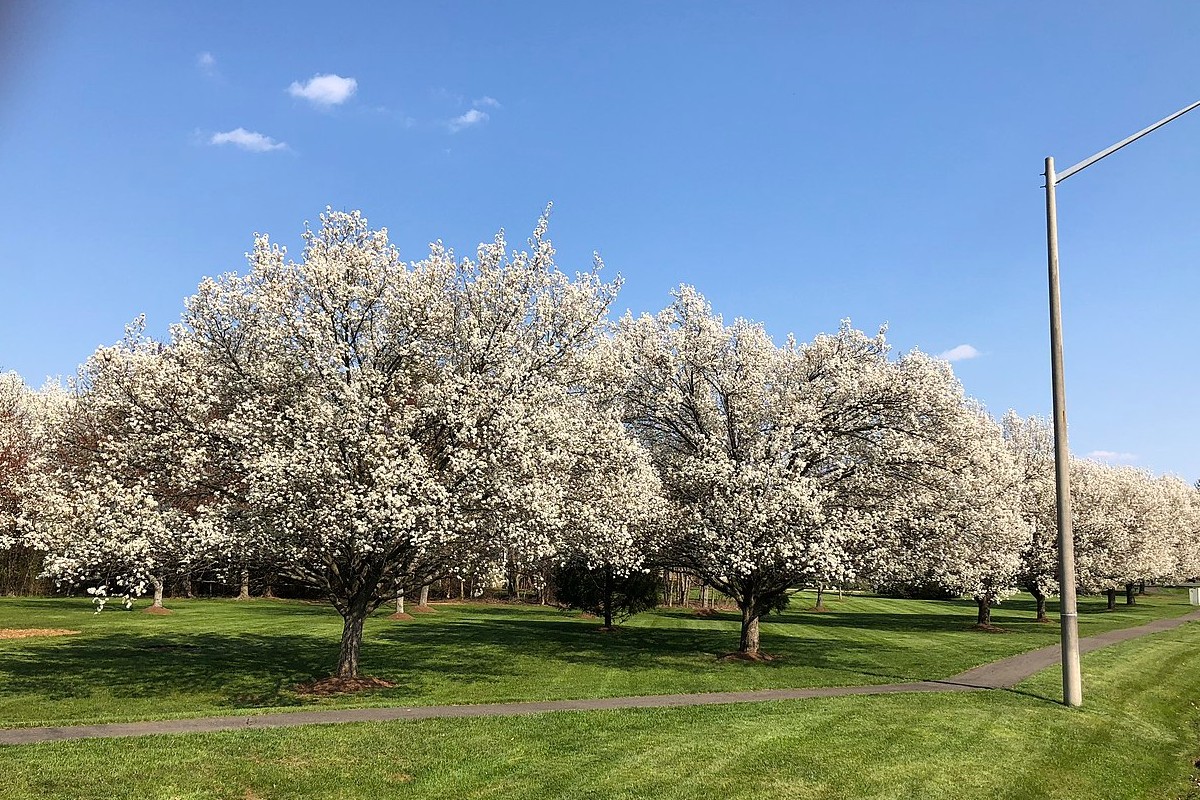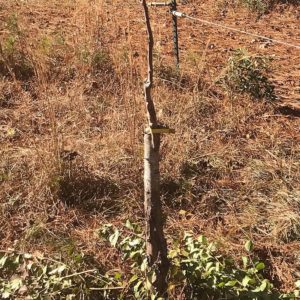
By Lindsay Street, special to Statehouse Report | There is a saying that the best time to plant a tree was 20 years ago, and the second best time is now. But what about the tree you didn’t have to plant? With minimal management, some trees — even one derided as invasive — can become a boon.

The burgeoning war on the ubiquitous, non-fruiting pear trees that adorn many South Carolina landscapes is unnecessary, expensive and potentially could do more harm than good. The state is banning the sale of Bradford pears in 2024 and is offering a bounty on its fragile bark. Like all wars, there is a moral message underpinning it: to save our wild native habitat, we must use everything at our disposal to rid the land of Bradford pears.
That includes destructive herbicide, which can disrupt the soil balance, even when used as directed. Cut down a Bradord, apply Roundup, repeat. But there is another, gentler, less expensive way.
My partner and I became stewards of 10 acres in Berkeley County in 2015. The land consisted of a much-abused cornfield and a timber tract. The last thing we wanted to do was spray more herbicide on a land that had had its fill of petrochemicals for at least four decades. But the neighbors that flanked the property had the maligned Bradford pears decorating their yards, blooming brilliant white in the early spring.
Those blooms become tiny fruits for birds to dine on, and then the birds kindly deposit them near wherever they perch. With our land absent of tilling and herbicides, it didn’t take long for the Bradford’s gnarly progeny, the callery pear, to find root. (Want to know more about Bradford and callery pears, and the difference? Essentially, Bradfords are a cultivar of the callery pear, intended to be non-seed producing; but borrowing from Jeff Goldblum’s character in Jurassic Park, life finds a way to take root.)
We could chop each one down, but that is nearly a fool’s errand because they spring forth from the roots so readily. This is a plant that knows how to make an entrance and stick around for the long haul. Hence, this is why herbicide is the prescribed method to get rid of them.

But as with anything with life, there are alternatives. And in this case there’s an alternative that feeds humans and wildlife: grafting.
Nearly all fruit you’ve ever eaten from the grocery store has been the result of grafting. A new apple variety comes about on a single tree, and cuttings are made from the tender twigs, and those twigs are spliced onto another tree, usually known as rootstock.
Callery pear is vigorous and a perfect rootstock. Scions grafted to it can produce edible fruit within three or four years.
So one year, around winter solstice, we visited neighbors’ yards that had fruiting pear trees: Barlett, Pfieffer and something we’ve come to call “Nancy’s Apple Pear” because the owner doesn’t know the variety and the pear has the texture and near taste of an apple.
Then at the spring equinox, we went about finding callery pears on the land. That first year, we found four. Only one of our clumsy grafts made it. The second year, we found 16 (including a few “guerrilla grafts” along our dirt road) and 14 grafts took. We have 15 pear trees that are all nearing fruiting maturity for free and with minimal effort.
Pears are an easy tree to begin grafting. The learning curve is short and forgiving. We went from a 25 percent success rate the first year to 87.5 percent success rate the second year. I even grafted a fruiting apple tree scion to a callery pear last year and, despite being an ugly graft, the forgiving callery pear accepted it. I don’t know if it’ll survive to fruiting (internet searches seem split), but if it breaks off, I’ll just graft another pear scion to the callery pear.
Of course, the seeds from my fruiting pears could produce more callery pears — thorny with no real “value” to native wildlife (although one could say the same of South Carolina’s commodity crop fields that have put 4.8 million acres of former wildlife habitat toward sole human use). I don’t fear for the land, however.
Like many so-called invasive species, callery pear is opportunistic. It exploits a first succession habitat. There must be a disturbance to take root. A callery pear seed deposited amid a healthy forest will find little room for growth. A callery pear seed deposited on recently bush-hogged land will thrive.
If we manage the land to promote health, planting native perennials, burning or pruning with care, tilling or disturbing with equal care, the callery pear will still exist but only at the edges. And there we can easily spot and graft and then harvest.
Let’s start making invasive plants work for us and wildlife, rather than handing our money to companies that produce harmful chemicals. After all, these trees will likely be around for a while, ban or no ban.
- Want to learn how to graft these invasives? Here’s a great video on YouTube to get you started: https://youtu.be/FL0wNcP9kk4
Lindsay Street, a former correspondent for Statehouse Report, lives in Ridgeville. Have a comment? Send to: feedback@statehousereport.com















 We Can Do Better, South Carolina!
We Can Do Better, South Carolina!